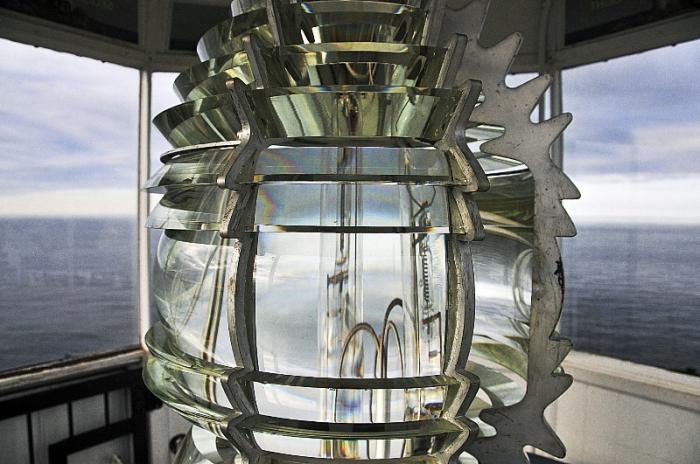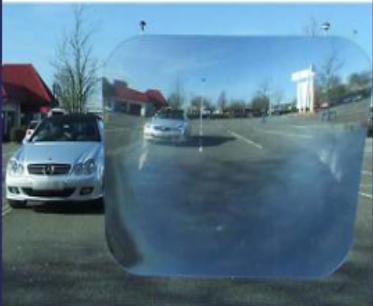In the old days, approaching the coast for sailors was the most dangerous part of their journey. Due to adverse climatic conditions, shallows or coastal cliffs could cause a shipwreck. Rescued sailors lighthouses, the best navigation structures of the time. For a long time, bonfires were lighted on their peaks; later, kerosene lamps served as light sources until they began to use electricity. In the 19th century, the Fresnel lens became the light saving the life, making the light of the lighthouse the most bright and visible from afar.

The compound composite lens was created by Augustin Fresnel, a French physicist, creator of the wave theory of light. The Fresnel lens is composed of individual small thicknesses of concentric rings adjacent to each other and forming a cylinder with a light source inside. In section, the rings have the shape of prisms. Each of the rings collects light into a parallel narrow beam of rays diverging from the center. When the cylinder rotates around the light source, the light rays extend to the horizon. The color of the rays, their number, the time interval between them make up a special unique handwriting of the lighthouse. A summary of the characteristics of the various lighthouses was on board the ships, and it was from it that the sailors recognized which lighthouse was in front of them.
The Fresnel lenses installed on the lighthouses became an important step in equipping them with powerful light sources. These complex composite lenses have increased the concentration of light intensity to 80,000 candles. Prior to the invention of Fresnel, it was possible to focus the light of a burning wick or lamp only by placing the lamp in the focus of a collecting lens of a sufficiently large diameter or concave mirror. For these purposes, an integral optical element of a large size was needed, which, under the influence of its own gravity, could burst. Therefore, dozens of concave mirrors were used; each of them had a separate flashlight in focus. This decision was inconvenient.
The composite Fresnel lens helped to achieve an increase in the intensity of light, its concentration in a given direction. The assembly of the individual optical elements did not reflect the light, but worked on the lumen, revolving around a light source of constant intensity, emitting in all directions.
Since then, Fresnel designs have remained an unsurpassed technical device used not only for river beacons and lighthouses. In the form of Fresnel lenses, glass of various signal lights, traffic lights, car headlights, and parts of lecture projectors were first made. Then magnifiers were created in the form of rulers made of transparent plastic, with inconspicuous circular grooves, each of which was a miniature ring prism, but in general they were a collecting lens. The resulting lens is used as a magnifying glass to enlarge the subject, as a camera lens, creating an inverted image.
Over time, the scope of Fresnel lenses has expanded significantly. It includes the development of photographic equipment, various lighting devices, sensors for tracking security systems, an energy concentrator for solar collectors, and mirrors used in telescopes. The optical properties of lenses are also used in multimedia. So, DNP, the largest manufacturer of high-tech projection screens, creates Supernova screens based on the lens. And in rear projection screens, not only the Fresnel lens is used, but also other optical technologies, which allows you to get unique display tools.

Depending on the field of application, the lenses may have different diameters and vary in type. Two types of lenses are known: annular and waist. The first are designed to direct the flow of light rays in one direction. Ring lenses have found application in manual work with small parts, displacing conventional magnifiers. Belt lenses that can transmit light beams in any given direction are used in the industrial sector.
The Fresnel lens can be positive (collecting) and negative (scattering). A short-focus negative polyvinyl lens significantly increases the field of view. It is known as a Fresnel parking lens. The extension of the viewing angle, which it gives, allows you to see obstacles located below the car, not included in the field of view of the side mirrors or rear-view mirror. Such a lens greatly facilitates maneuvering when parking, towing a trailer and reversing, avoiding collisions with children, animals or other objects.
Fresnel lens has become a multifunctional tool, its invention played an important role in the development of the technological field.